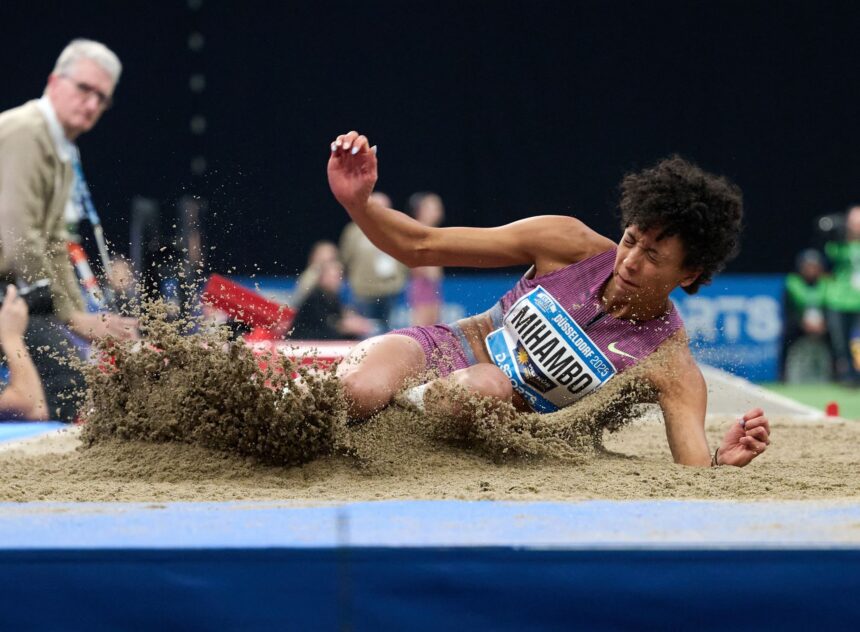A groundbreaking change was tested at the indoor athletics meet in Duesseldorf on Sunday, potentially revolutionizing the sport of long jump. Instead of the traditional board that marks the take-off point, a new 40-centimeter “take off zone” was introduced to accurately measure the jump distance using cameras to track where the foot left the ground. This innovation aims to reduce the number of invalid jumps and provide a more precise measurement of athletes’ performances.
German Olympic gold medalist Malaika Mihambo emerged victorious in the competition with a leap of 6.87 meters, marking her third consecutive win this year. Speaking to Germany’s ARD network, Mihambo expressed her interest in the new system, describing it as “exciting” and acknowledging that there are areas for improvement.
While the traditional board was still used to measure jumps at the Duesseldorf meet, Mihambo’s performance in the “take off zone” exceeded her usual distance of 6.39 meters, which often included several invalid jumps. Despite her impressive 7.07-meter jump in Karlsruhe, Mihambo attributed her slightly lower performance in Duesseldorf to fatigue.
World Athletics President Sebastian Coe has been a proponent of implementing changes to enhance the sport, citing the high number of invalid jumps that can bore spectators. Coe revealed that approximately one-third of jumps were deemed invalid at the 2023 World Championships, prompting the need for reform.
However, not everyone is on board with the new measure. American long jump champion Carl Lewis criticized the idea of a “take off zone,” labeling it as an “April fools joke” when it was first proposed in 2024. Lewis argued that adding a designated take-off zone would eliminate the most challenging aspect of the event and detract from the essence of the sport.
As discussions continue within the athletics community, the future implementation of the “take off zone” remains uncertain. While some view it as a progressive step towards improving accuracy and reducing invalid jumps, others raise concerns about altering the fundamental skills required in long jump. Whether this innovation will be adopted in major competitions like the Olympics is yet to be determined, as stakeholders weigh the benefits and drawbacks of this significant shift in the sport.








